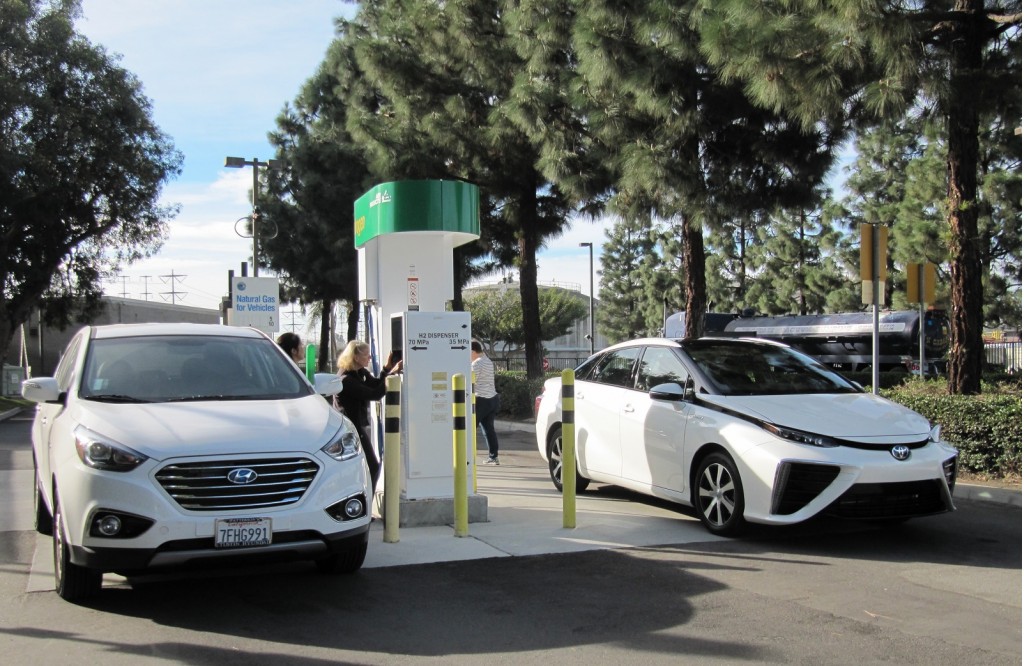As the old saying goes, you can identify the pioneers by the arrows in their backs.
Being an early adopter of new technologies can be exciting, but it can also require adaptations to fit into its limitations.
Just ask David Wenger, one German proponent and driver of a Mercedes-Benz B-Class F-Cell, the small Mercedes hatchback powered by a hydrogen fuel cell.
DON'T MISS: Mercedes-Benz GLC to offer world's first plug-in fuel-cell powertrain
As the head of a 19-person firm involved in developing that car's powertrain, Wenger was one of the first Germans to lease the car for two years and use it in his regular daily travels.
He also made leases on the car available to his employees. (A few dozen of the same car were tested by Mercedes in Southern California several years ago.)
But as Wenger told H2-International in a long interview about his experience driving a fuel-cell vehicle, “In total, the results are sobering, sadly. That really hurts.”

First Mercedes-Benz B-Class F-Cell hydrogen fuel-cell vehicle delivery, Newport Beach, Dec 2010
EDITOR'S NOTE: The page on H2-International that is linked above contains the opening and excerpts from the full article, which is published in full in the July 2016 issue behind the site's paywall.
As with the earliest California drivers of the Hyundai Tucson Fuel Cell and Toyota Mirai, Wenger and his employees found that fueling infrastructure proved a challenge.
Stations that showed as online on a phone app sometimes proved inoperable when the driver arrived.
ALSO SEE: Nissan takes a different approach to fuel cells: ethanol
In one case, it turned out that an inexperienced user had pressed the Emergency Stop button by mistake, but that did not change the station's status in the app.
Moreover, the hydrogen car's total travel range was considerably shorter than that of diesel cars in the company's fleet—requiring two fuel stops when none was needed in the diesel.
Planning a stop at the nearest hydrogen fueling station could add half an hour to a trip, one employee said.

2015 Hyundai Tucson Fuel Cell, 2016 Toyota Mirai at hydrogen fueling station, Fountain Valley, CA
The hydrogen-powered Mercedes performed adequately, Wenger said, though it was far from a sports car.
And some of the complaints had to do with the basic age of the B-Class that was modified to use hydrogen, at that point a seven-year-old design with primitive or nonexistent infotainment capabilities versus more modern vehicles run by the company.
Overall, Wenger called his experiences with the car "sobering," offering them in the spirit of constructive criticism to help a nascent industry better understand actual consumer reactions to its innovations.
CHECK OUT: Daimler, Ford, Nissan Agree To Share Hydrogen Fuel-Cell Costs For 2017 Or Later (Jan 2013)
It's worth pointing out that some of the criticisms aimed at the B-Class F-Cell would have applied even to long-distance battery-electric cars, though not necessarily a range-extended electric car like the BMW i3 REx.
Still, the costs and operational challenges of establishing a hydrogen infrastructure continue to be substantial—and mass-market users will likely expect no less than parity with gasoline fueling, one of the main arguments used by hydrogen proponents.
Through June, 290 Toyota Mirais and 117 Hyundai Tucson Fuel Cell vehicles have been sold or leased in the U.S. The Honda Clarity Fuel Cell is to go on sale in California later this year.
_______________________________________













